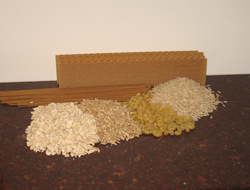Aerobic Exercise
Published: January 17, 2020
Aerobic means in the presence of oxygen.
With respect to exercise and physical activity aerobic refers to activities which require your body to use oxygen to generate sufficient energy to meet your energy requirements.
The energy that fuels your body comes from the carbohydrate, fat, and protein that is contained in the food that you eat.
When enough oxygen is available within your body these nutrients can be fully broken down.
This optimises the production of ATP (adenosine triphoshate), a high energy compound used to "fuel" all metabolic activites in your body.
There are several metabolic pathways through which energy is released from glucose and fat, and some amino acids.
These include glycolysis and TCA (tricarboxylic acid cycle) or the Kreb's cycle. The TCA requires oxygen to metabolise energy containing nutrients.
When you are exercising aerobically you have enough oxygen to meet your energy requirement over a relatively long period of time.
Aerobic activities can improve cardiovascular fitness by improving your ability to breath in and distribute oxygen to your working muscles though improved heart and lung function.
The term aerobic is usually, but not always, appliled to those activities that are continuous.
Continuous aerobic activities include:
Slow walking, golf, bowling and softball are aerobic activities, but the intensity and duration, may not be sufficient to bring about cardiovascular improvements.
For this reason they are not usually considered "aerobic exercise".
However, physical activity is not only about aerobic fitness as being physically active has many health benefits.
To fuel your physical activity make sure you consume a nutritionally balanced diet every day.
References
1.
Whitney, E. & Rady Rolfes, S. (2005). Understanding Nutrition. Belmont, CA: Thomson Wadsworth
2.
CSEP (2003).The Canadian Physical Activity, Fitness & Appraisal. Health Canada
3.
Corbin, C.B. & Lindsey, R. (1994). Concepts of Physical Fitness. Dubuque, IA: Wm. C. Brown Communications Inc.


